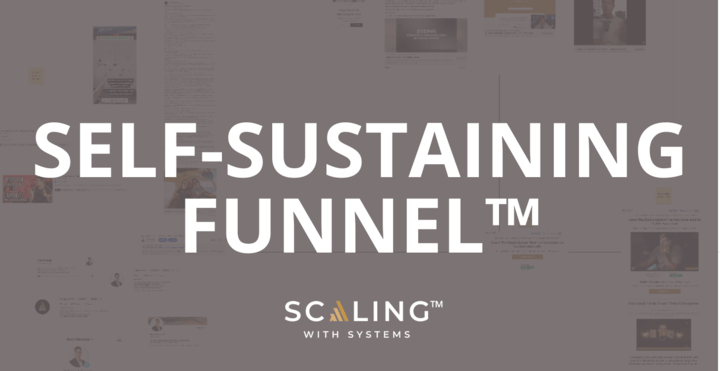There’s no doubt that Facebook has the biggest global audience of all social networks.
Facebook reached 2.7 million monthly active users in the second quarter of 2020. Almost every industry can benefit from the massive user base of this social network.
Many brands spend millions on Facebook ads each year, but they are making common Facebook ad mistakes that are hurting their growth.
62% of brands lost money or broke even on Facebook ads in 2017. Several additional advertising features have been added to the social network since then. Though the platform is trying to become more brand-friendly and has many success stories with ads, it can’t promise ROI for everyone.
As a business owner, Facebook ads can be extremely beneficial. But how do you do that without becoming a part of the 62%?
In this guide, we will cover the most common Facebook advertising mistakes that most marketers in the B2B industry make and how to fix them.
Mistakes to Avoid on Facebook Ads
Facebook ads are custom-targeted, and they tend to be less expensive than other forms of advertising. Facebook campaigns should make up at least some of your advertising budget.
You can make expensive Facebook ad mistakes even though Facebook Ad Manager is generally user-friendly.
Don’t fret! Common Facebook ad mistakes will happen – the key is identifying them and fixing them. Check out these 13 common Facebook advertising mistakes and how to avoid them!
1. Focusing Too Much On Ads Instead Of The Offer
You can create a Facebook ad that looks attractive, contains compelling copy, and is targeted to the right audience.
But if your offer is not attractive, you’ll waste your money. This tops our list of common Facebook advertising mistakes.
How To Fix This:
We recommend dialing in the offer to make it cold-friendly. When Facebook recognizes that people are interested in your offer, they show your ad more to the right target audience.
You can offer an ebook, a webinar, online service or a physical product. Whatever it is, it should be centered around their needs, interests, and problems.
Ask yourself:
Is this something that my audience would be willing to spend money on? If you answered yes, you probably have a great offer.
2. Not Having The Right Sales Process In Place
Business owners often make these common Facebook ads mistakes. This one is much similar to the one we discussed above, and this has nothing to do with Facebook ads. These businesses do not have the right sales process.
How To Fix This:
Most people think Facebook ads are the key to their entire business, when in reality, it’s just one piece of the puzzle. Without an established sales process, you will waste a lot of money when you get leads and book calls from Facebook ads.
We often have people working with us whose cost per book call is around $1,000 to $2,000. By making some adjustments and building out the funnel for them, we can bring it down to $100 to $200. Before, they would complain about Facebook ads being too expensive and not working. It was only because their entire sales process wasn’t streamlined.
You get ten eyeballs visiting your site when you have lots of waste and inefficiency. One of them might convert into a booty call. With increased efficiency, you can easily get 5 of your ten potential customers to book a call.
3. Not Testing Audience Targeting Options
If you have been recycling the same Facebook ad audiences since 2021, you have undoubtedly struggled to maintain steady results. The results of your ads may have plummeted if you target Facebook users who have visited your website.
With Apple’s App Tracking Transparency framework, iOS users have improved their digital privacy while advertisers have limited their ability to reach and track them. Testing other targeting options is a better idea than creating website-based audiences.
How To Fix This:
- Broad targeting: Meta suggests targeting users based on their location, gender, and age to reach the most people.
- Custom audiences: Create audiences based on people who have followed your Facebook page or interacted with your content.
- Lookalike audiences: Use conversion optimizations in Events Manager to create value-based lookalike audiences.
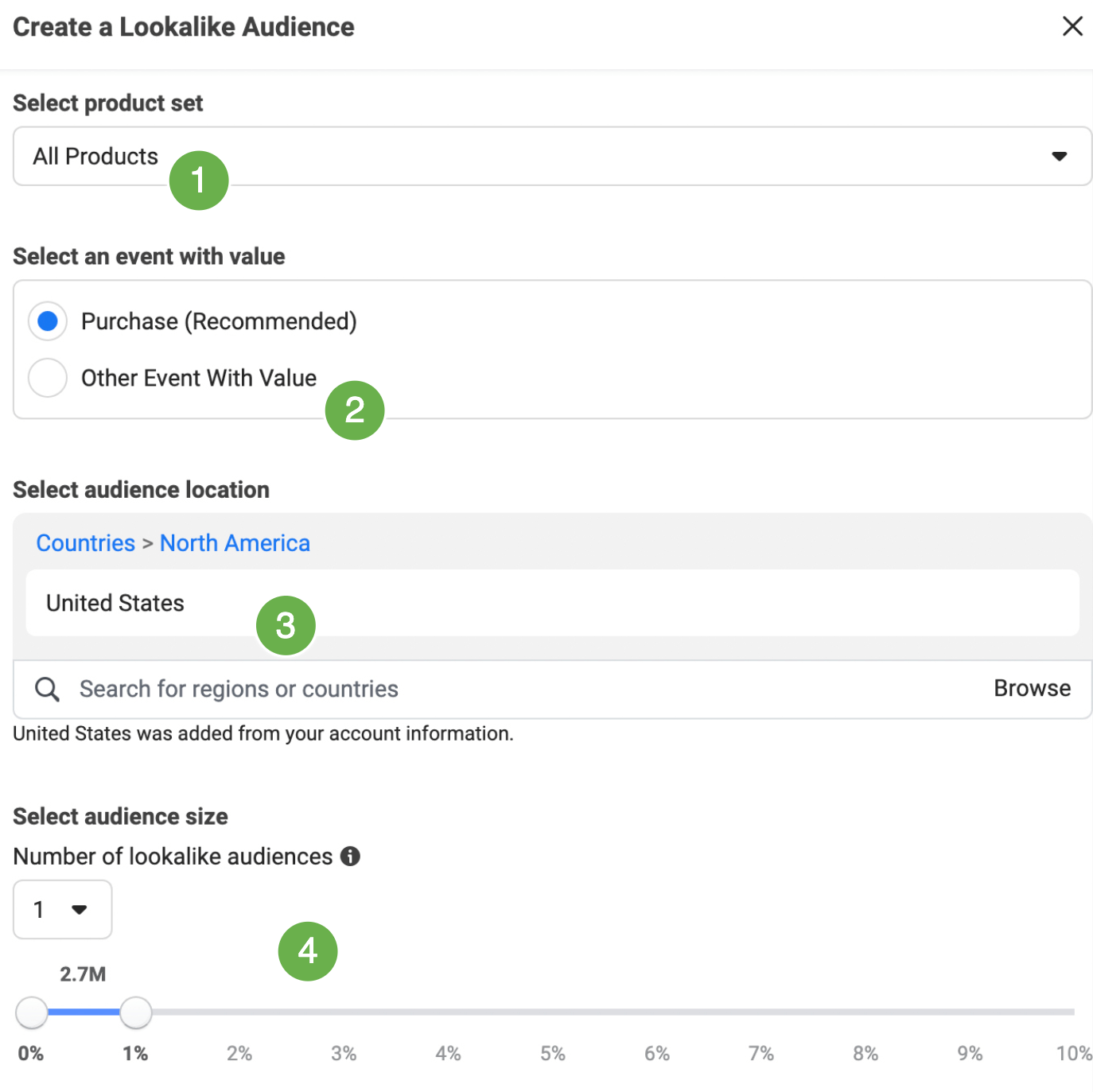
It’s a good idea to test two or more audiences against each other if you’re not sure which will perform best. Set up two identical ad sets in Ads Manager except for the audience. Click the A/B Test button and add the ad sets.
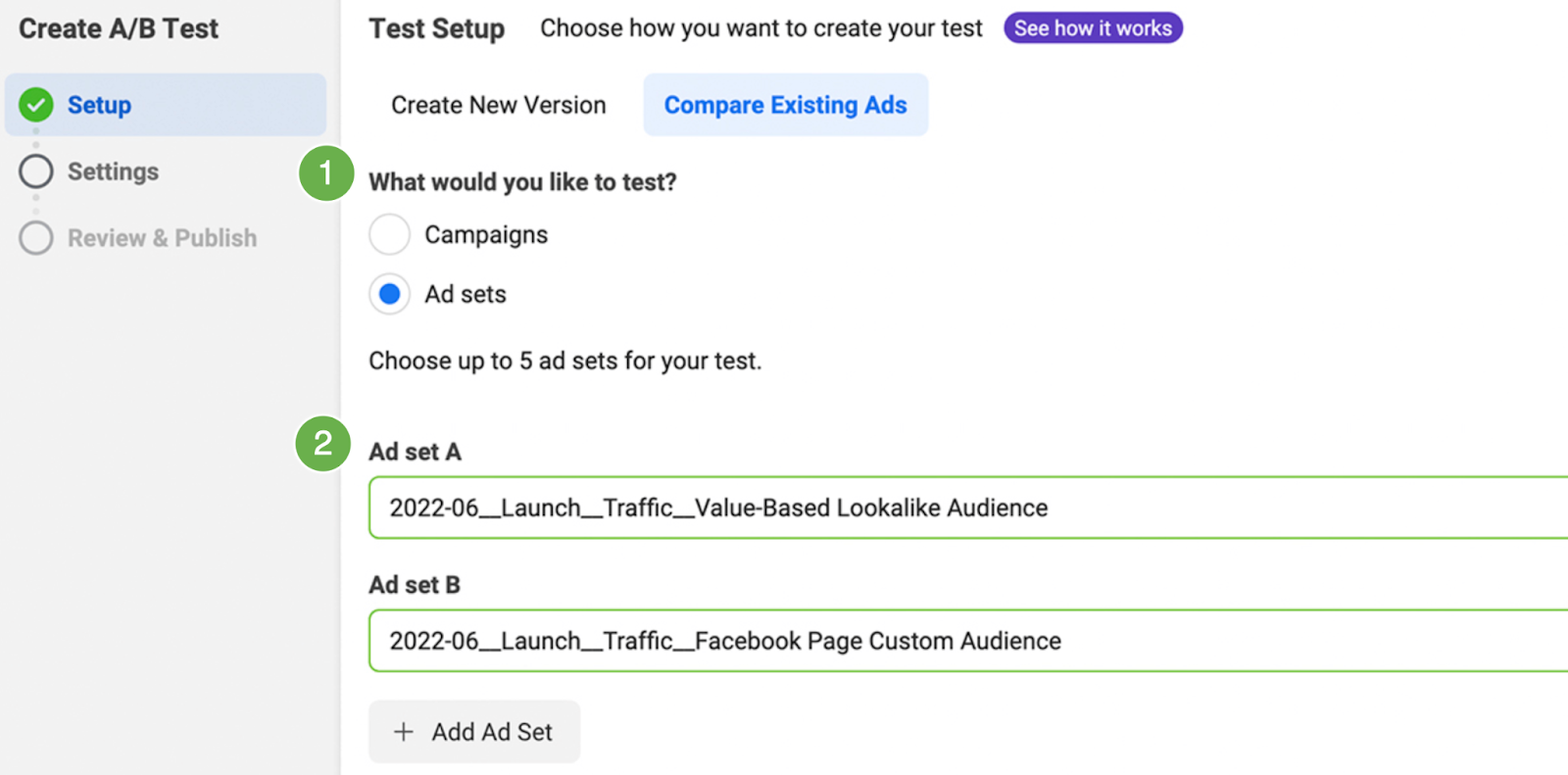
Select a key metric that aligns with your campaign goal and compare the two ad sets. Find out which ad set won, then use what you learned to build more effective audiences.
4. Choosing The Wrong Goal
This is one of the most vital mistakes to avoid on Facebook ads. Choosing the right campaign objective can be challenging, even for experienced Facebook advertisers. Some of the options appear to have identical optimization settings.
You can completely derail your campaign results by choosing the wrong objective. Using Meta’s algorithm, your ads are delivered to people most likely to complete your objective. For instance, it won’t work if you choose traffic when you really need sales.
How To Fix This:
Always consider how your objective aligns with your business goal. Choose a top-of-funnel objective if you want to expand into a new market. Choose a bottom-of-funnel objective to increase revenue.
Ads Manager’s older version simplified this process by splitting objectives into funnel stages: awareness, consideration, and conversion. Choose the objective that best fits your business goals from the multiple objectives available for each stage.
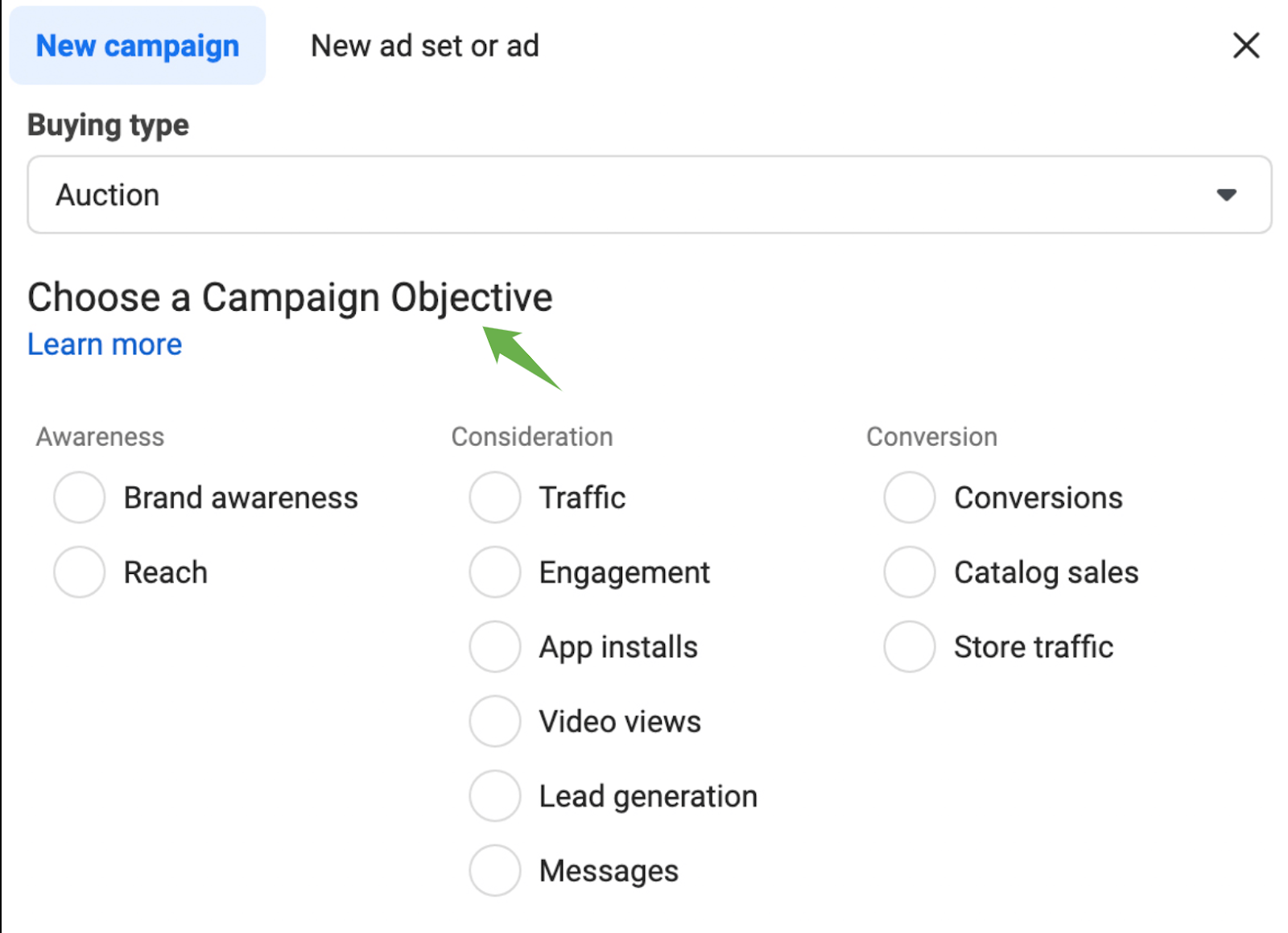
The same process applies to Outcome-Driven Ad Experiences (ODAX) in Ads Manager. Top-of-funnel objectives appear at the top of the list, while bottom-of-funnel goals appear at the bottom, as shown below:
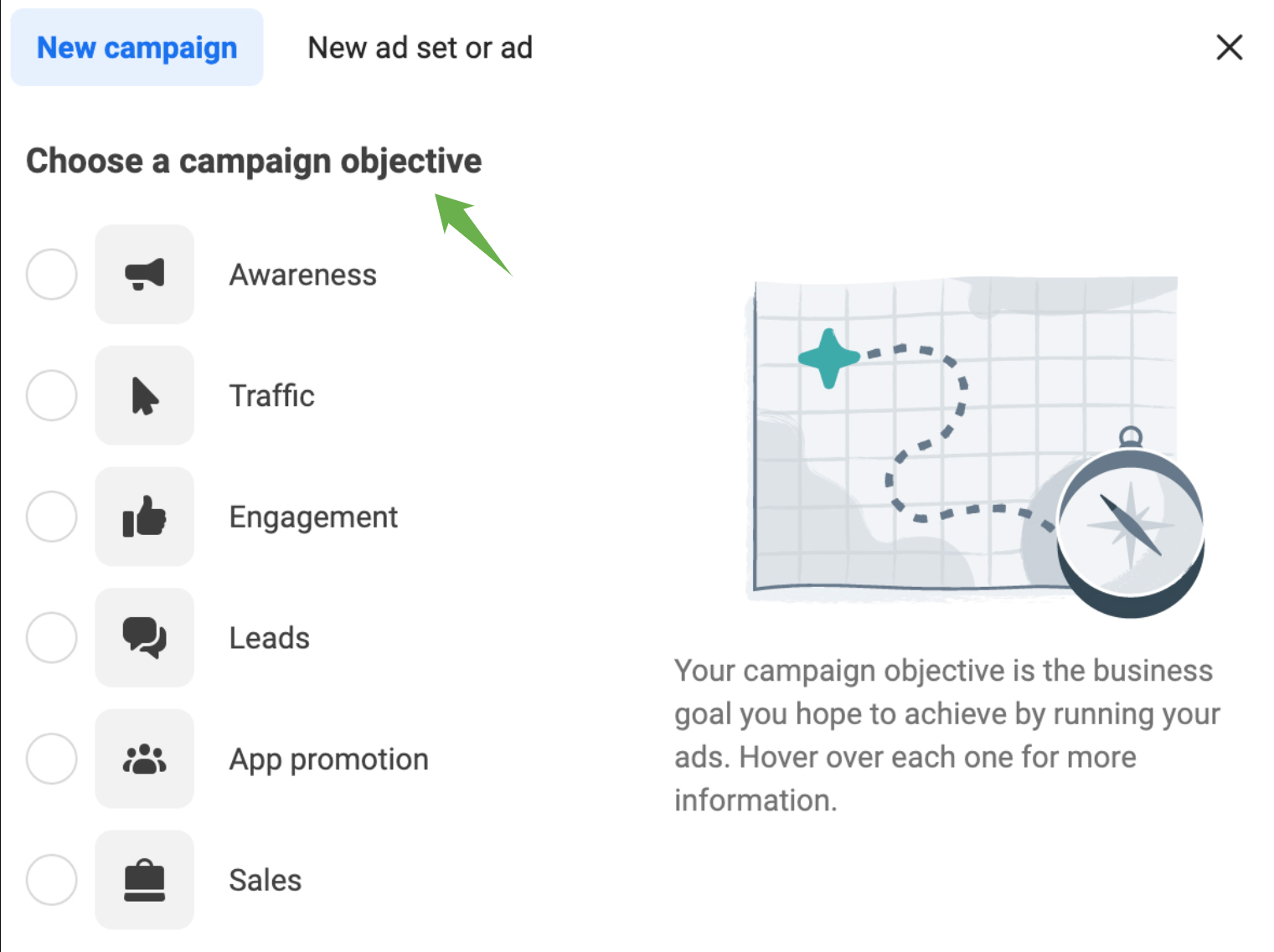
5. Not Having Correct Campaign Structures
We often see marketers making these common Facebook advertising mistakes. Using Facebook Ads Manager, you can organize your account by campaigns, ad sets, and ads. If you don’t have a system for naming campaign elements and assets, your ad account can quickly become inefficient and disorganized.
How To Fix This:
Every campaign needs at least one ad set and one ad. While multiple ad sets and ads are often a good idea, you should only publish as many as you need for each campaign.
Facebook ads optimize performance at the ad set level. During the course of one week, an ad set requires 50 optimization events to achieve stable performance.
As you add more ad sets to a campaign, you have to spend more money optimizing them. The smaller your campaign budget, the more difficult it will be for your account to achieve the optimization in the required timeframe. In the long run, that can prolong the learning phase and compromise performance.
Optimize performance by consolidating ad sets. Group similar segments together rather than creating separate ads for every interest or lookalike. Each ad set should have no more than three to five ads.
6. Not Using The Proper Naming Conventions
This is a frequent Facebook advertising mistake made by business owners. It’d be ideal if you could open Ads Manager and immediately identify the goals and audiences of your campaigns. You can significantly increase efficiency by consistently naming campaigns, ad sets, and ads.
How To Fix This:
Every account level should have a standard naming convention:
- Campaign: [Date]_[Campaign Name]_[Goal]
- Ad Set: [Date]_[Campaign Name]_[Audience]
- Ad: [Date]_[Campaign Name]_[Ad Name]
A typical campaign, ad set, and ad name might look like this:
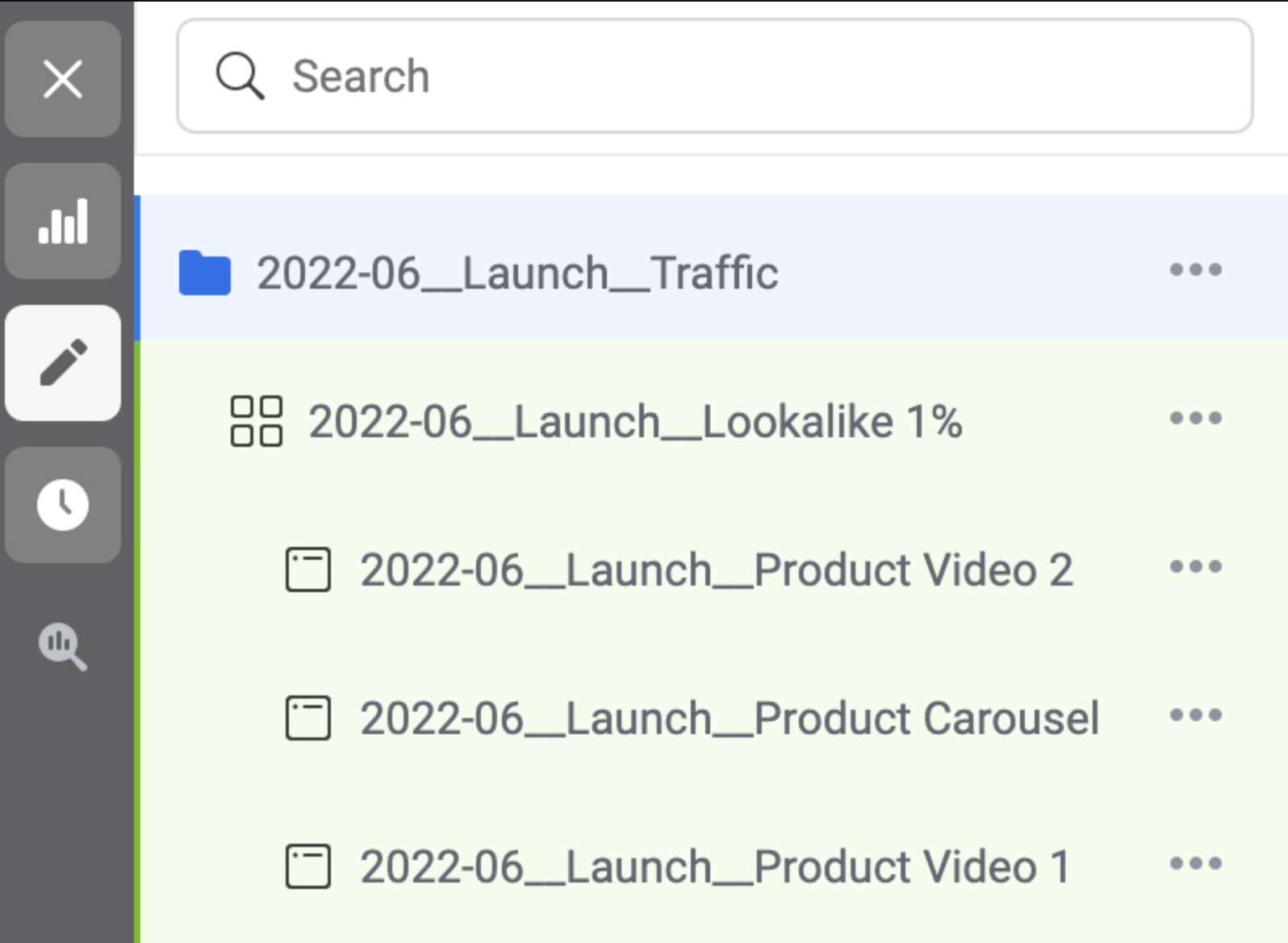
Create a template in Ads Manager to simplify the naming process. To create a template for a campaign, click the Create Template link right next to the campaign name. Then, identify the naming conventions for your campaign levels.
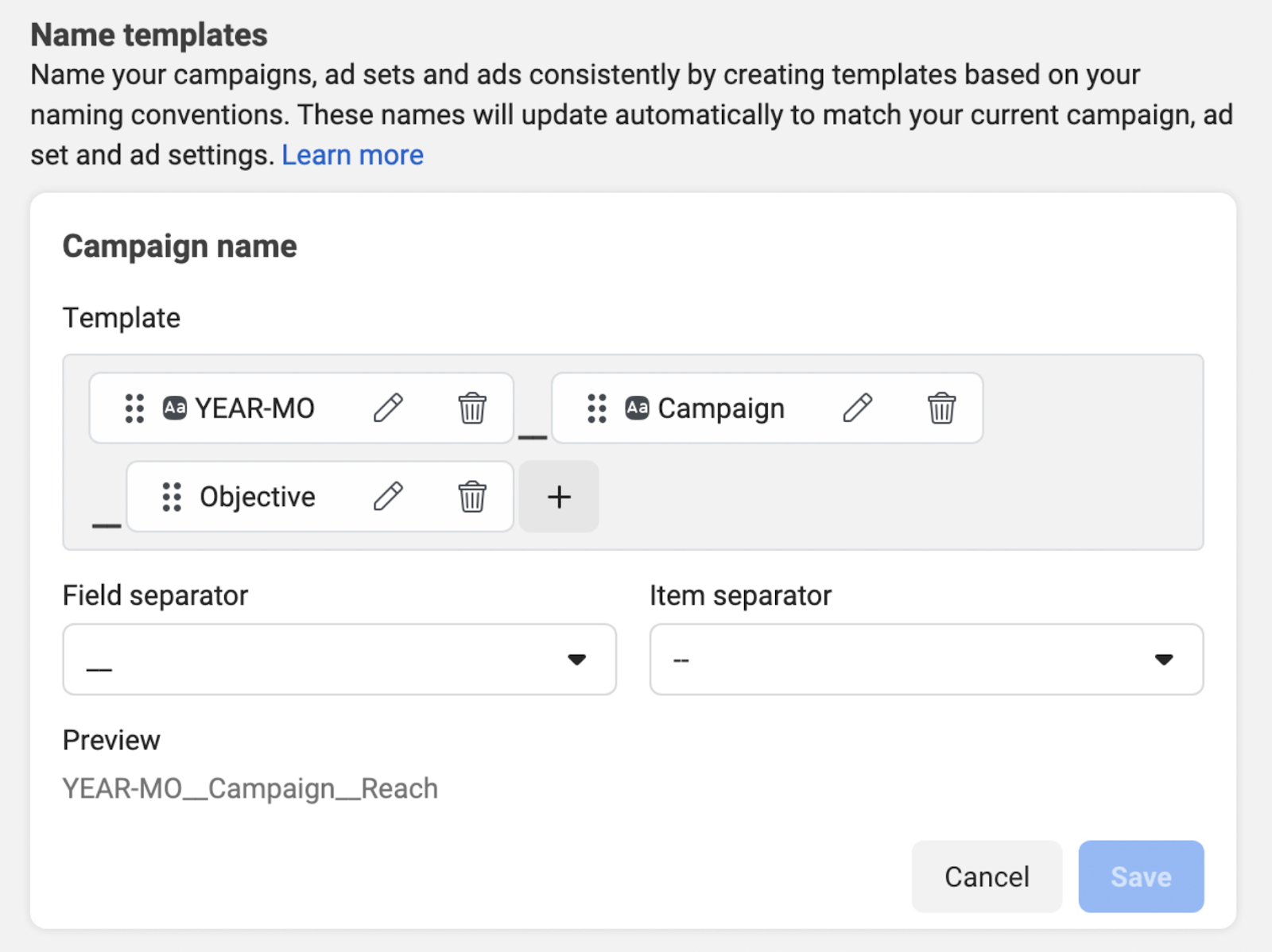
Switch on the Template toggle for future campaigns to reuse it. By doing so, you can keep your account organized and easy to navigate.
7. Making The Wrong Budget Choice
Campaign Budget Optimization (CBO) can improve campaign results and simplify campaigns. With CBO, you don’t have to calculate budgets for each set of ads. Rather, you assign a budget to the campaign and Meta allocates it to the ad sets. This option is ideal if you aren’t sure how much to spend on each ad set.
CBO isn’t the best option if you have multiple ad sets with vastly different audience sizes. This can be one of the most costly Facebook ad mistakes you’ve committed. Using CBO can lead to more money being spent on large ad sets at the expense of smaller ones. As a result, some audience segments may barely see your ads, while others may see them frequently.
How To Fix This:
Turning off CBO and setting a budget at the ad set level will ensure that each ad set spends an appropriate amount. Your ad set budget gives you greater control over spending and ad delivery.
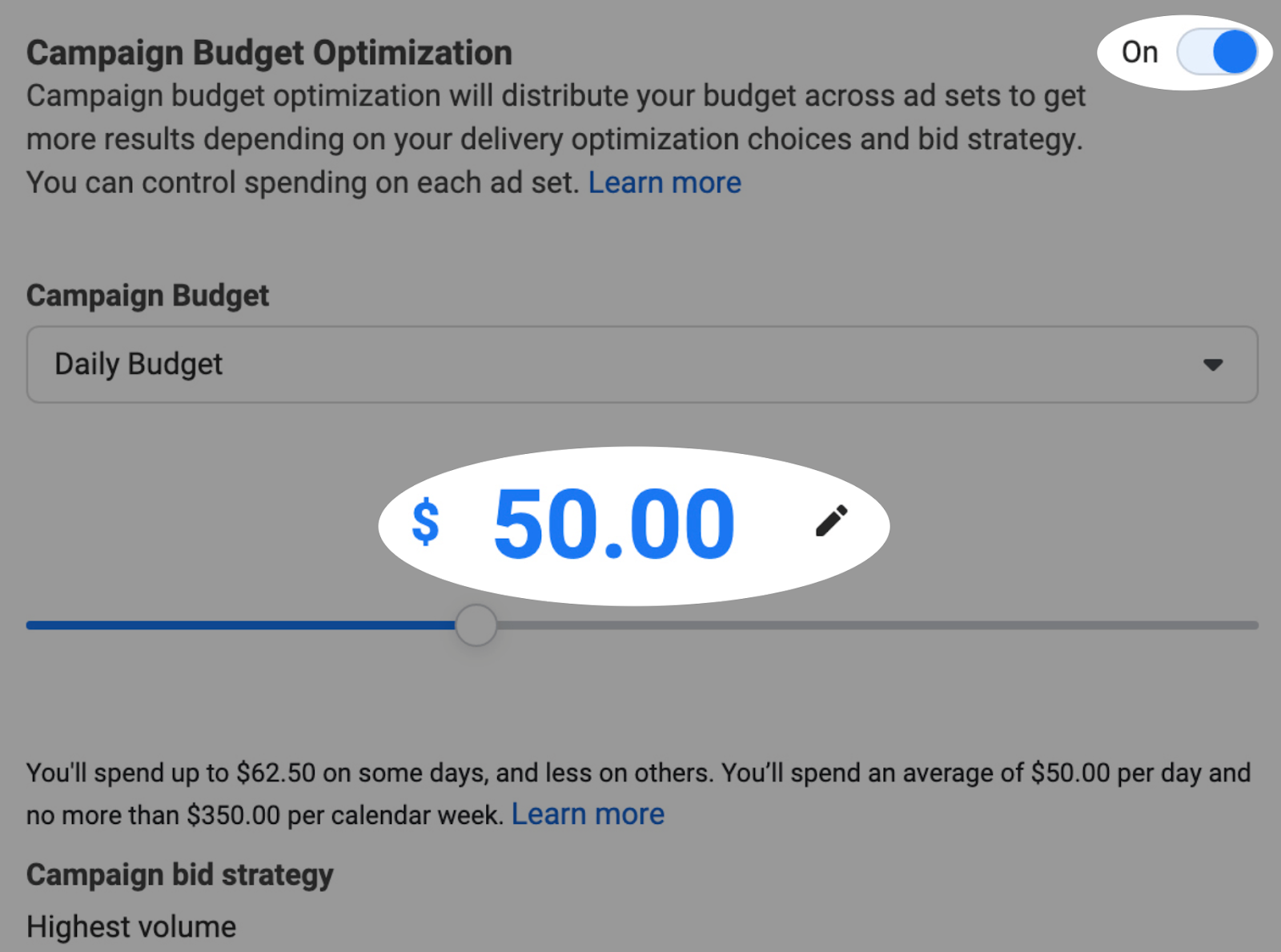
8. Not Tracking Results
Not tracking your ad performance can be one of the most fatal Facebook ad mistakes. You’ll never find out whether you’re wasting your money or getting your desired ROI.
We recommend keeping a close eye on your analytics and KPI numbers. Plus, you’ll find the metrics to decide whether you’re reaching the right people with your Facebook marketing.
How To Fix This:
Set up Meta Pixel. It will provide you with the most valuable metrics for your campaign.
The tool allows you to track, measure, and optimize your advertising campaigns. If you feel you aren’t reaching the right audience, you can even tweak your audience targeting.
Meta Pixel is a few lines of code you add to your website’s header. After you install it, Pixel will track users’ actions on your website after they click on your ad. By doing so, you can ensure that your ads are performing as you intended.
Tracking your ad performance is critical. Analytical data can assist you in determining whether the ad is effective or needs to be rewritten to reach the target audience. Plus, it’ll make sure you get your money’s worth.
9. Not Using Automated Rules To Scale
If you’re afraid of high ad frequency and diminishing campaign results—not to mention spending hours checking your Facebook ad reports—there’s a solution.
It’s called Facebook Automated Rules.
Automated rules keep your Facebook ad campaigns under control. When you meet your rule conditions, four different events trigger automatically:
- Turn off (campaign, ad set, or ad)
- Send notification to the ad manager (you)
- Adjust budget (increase/decrease daily/lifetime budget by…)
- Adjust manual bid (increase/decrease bid by…)
Creating a Facebook Automated Rule:
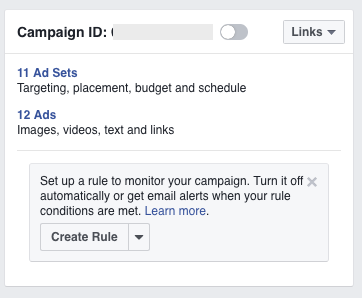
Apply the rules to specific campaigns, ad sets, or ads you’ve selected, or apply the rules to all active campaigns, ad sets, or ads.
How To Fix This:
Jon Loomer’s Facebook Automated Rules guide includes 17 automated conditions.
Create a new Facebook ad rule by selecting one or more campaigns, ad sets, or ads. Click on Create Rule.
Select one of multiple campaigns:
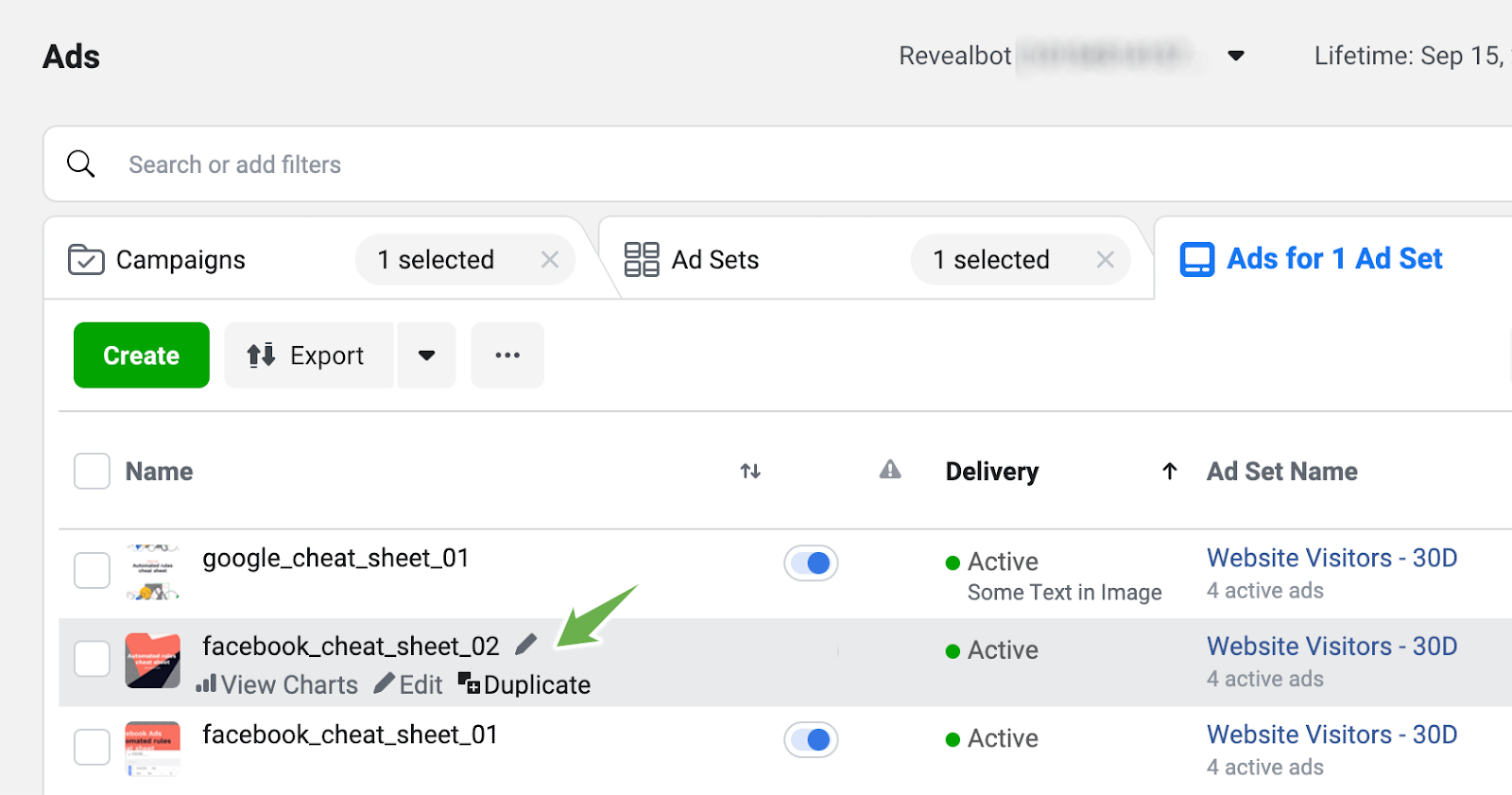
You can create custom combinations of conditions that will trigger an action after selecting the campaigns or ads.
As an example, ask Facebook to automatically disable all active ads in the campaign with frequencies over four.
Below are the settings for customizing your Facebook Automated Rule:
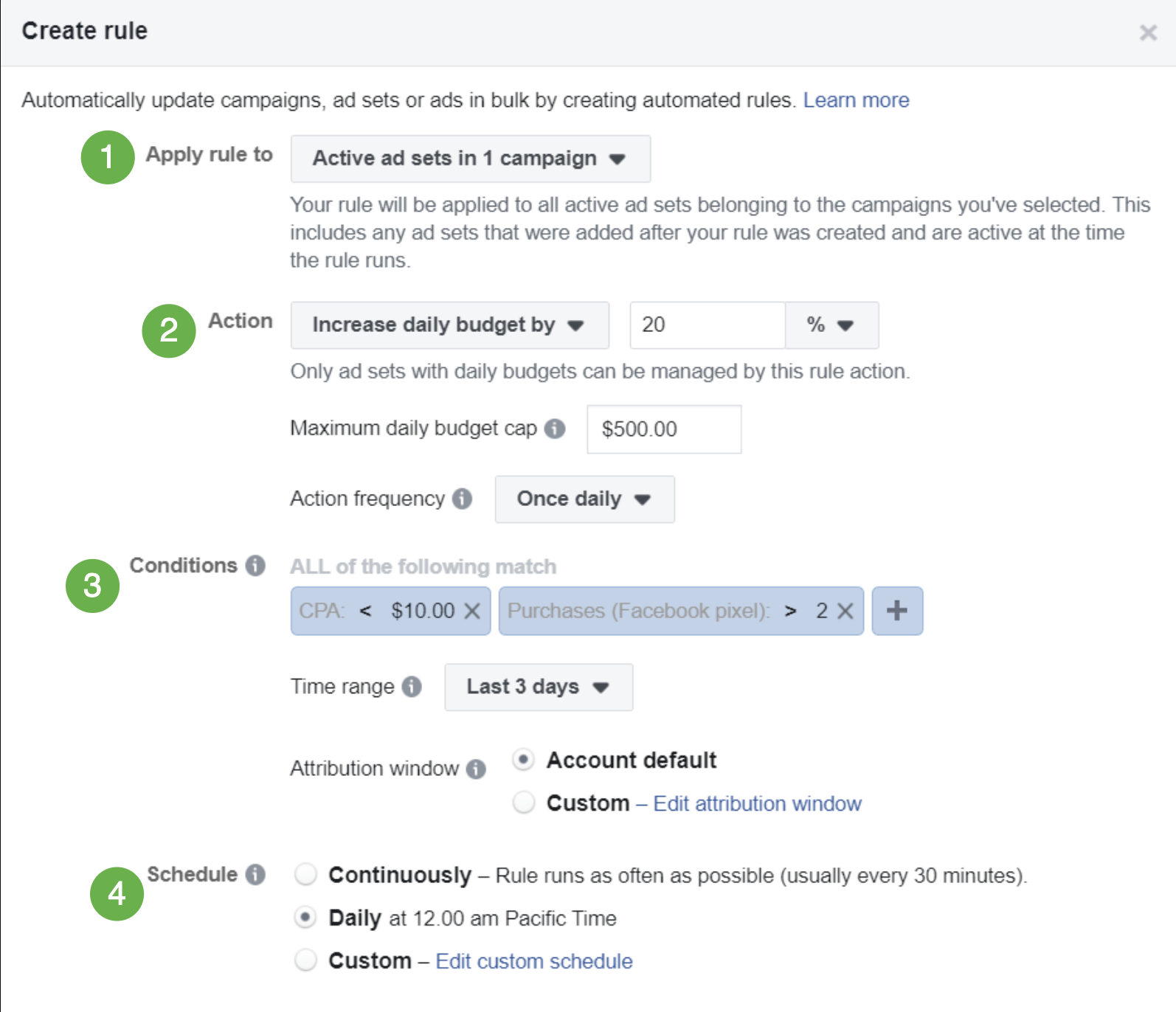
When a campaign starts getting lower results, Automated Rules alert you, preventing a cost spiral.
10. Disregarding Your Warm Leads
Some campaigns may be geared toward top-of-funnel objectives and audiences. The campaigns use Reach and Awareness objectives, interest-based targeting, and lookalike audiences. Using these audiences for all of your campaigns, however, neglects your warm audiences (people who are already interested in your business).
Neglecting your warm audience can prove to be one of the most expensive Facebook ad mistakes for your business. You’re essentially losing out on some key conversion opportunities, especially for bottom-of-funnel campaigns with Sales and Conversions goals.
How To Fix This:
Build retargeting audiences to reach people who are ready to convert. In Ads Manager, you have several options for retargeting warm audiences. Using these data sources, you can create custom audiences:
- Facebook and Instagram shops, including those who saved items and initiated checkouts
- Customer lists, including people you’ve added as warm leads
- Videos, including viewers of certain qualifying content
- Lead forms, including those who have opened and submitted your native lead forms.
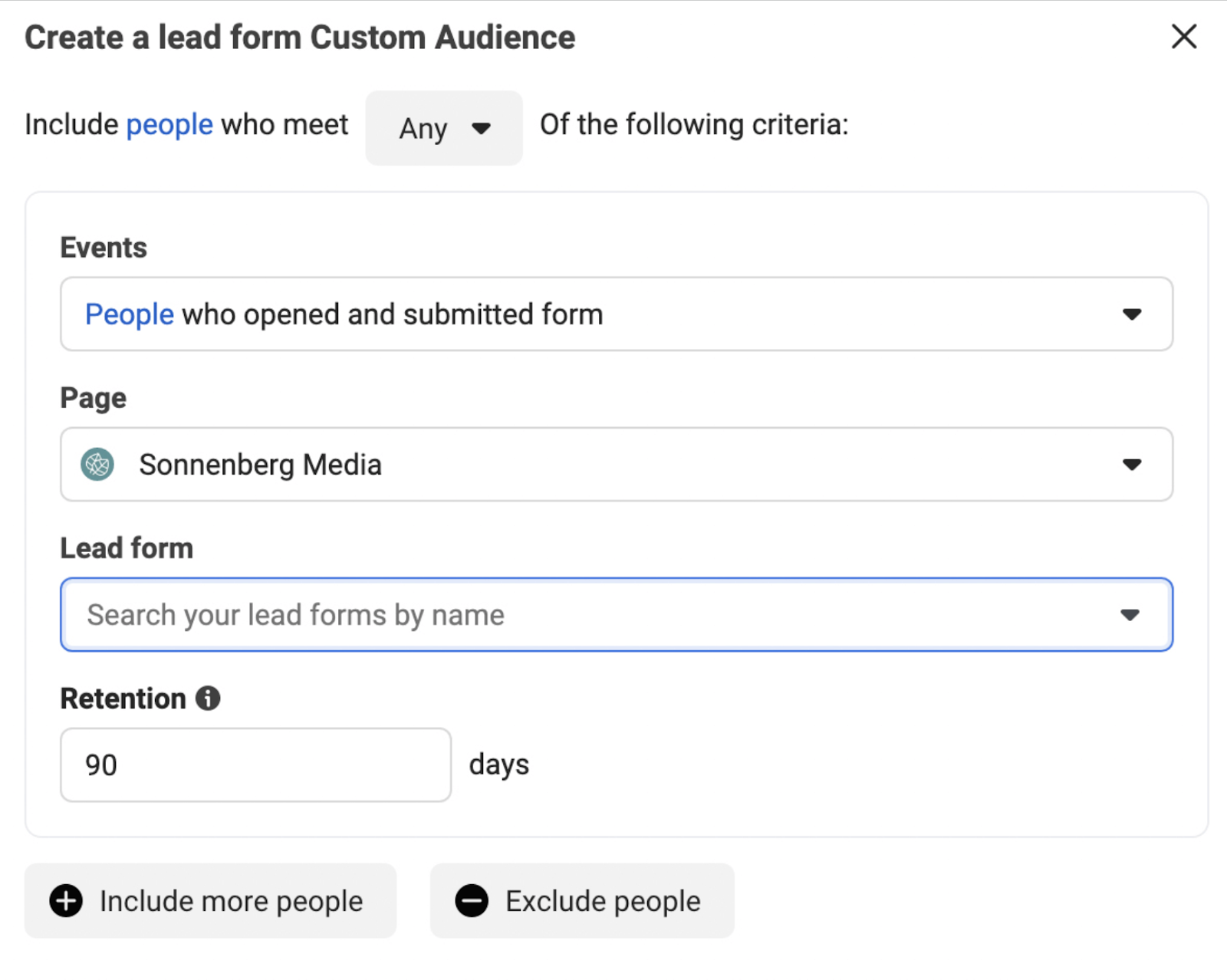
By using your catalog, you can create retargeting audiences for sales campaigns. Choose the Retarget Ads option at the ad set level. Viewers, carters, and purchasers from different product sets can be retargeted.
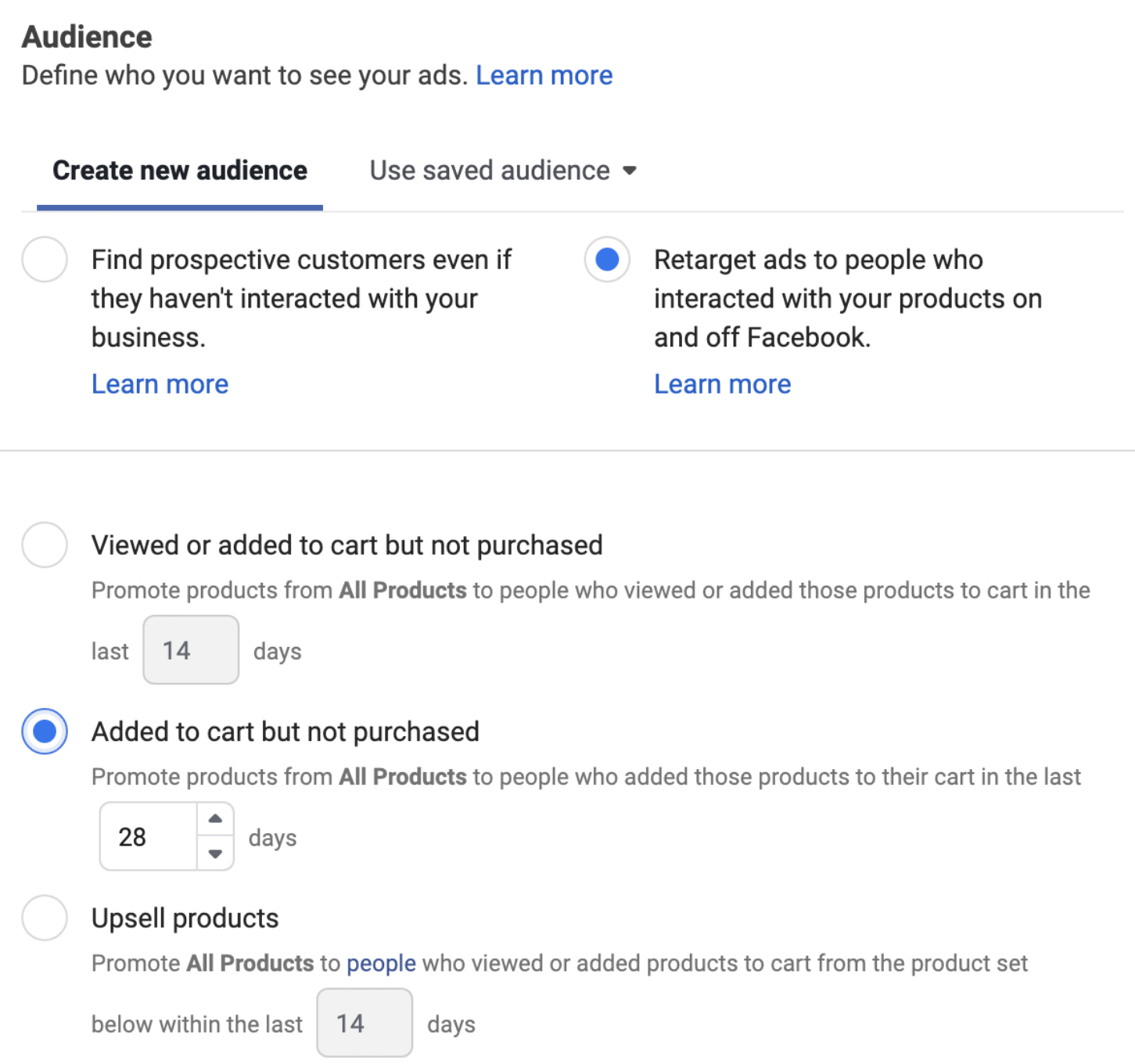
11. Using Ads For Sales Funnel Only
This is one of the most common Facebook ad Mistakes businesses make. Your Ad is solely intended to sell your products or services. You come off as a desperate sales person who’s pushy and trying to sell their service at all costs. No one likes being sold to.
How To Fix This:
If you want to avoid these common Facebook ad creative mistakes, ensure your ad tells a story that connects to your viewers. Building an emotional connection is important to convert cold audiences into raving fans.
Create ads that build trust by being vulnerable with your failures, successes, case stories, business milestones, and industry recognitions. Rather than getting people to buy from you, the goal of advertising is now to build trust and emotional connections. This brings more eyeballs on your ads, generating more cash flow for your business.
12. Not Having A Tangible Goal
Your campaign objective must be clearly defined before you begin. Without a clear goal in mind, your ads won’t have any direction. You might end up wasting your ad spend on posts that do nothing to help your business get closer to your goals and mission.
How To Fix This:
Identifying KPIs may help you create a tangible campaign goal. A KPI is a quantifiable metric that can be tracked throughout your campaign. Setting your campaign’s KPIs helps you determine your campaign’s goal, as they show whether your ads are achieving your objectives. As an example, if you want to boost engagement, one of your KPIs could be the number of Facebook Ads comments.
On Facebook, you can choose from different marketing objectives (shown below), which should coincide with your campaign objectives, when creating an ad campaign.
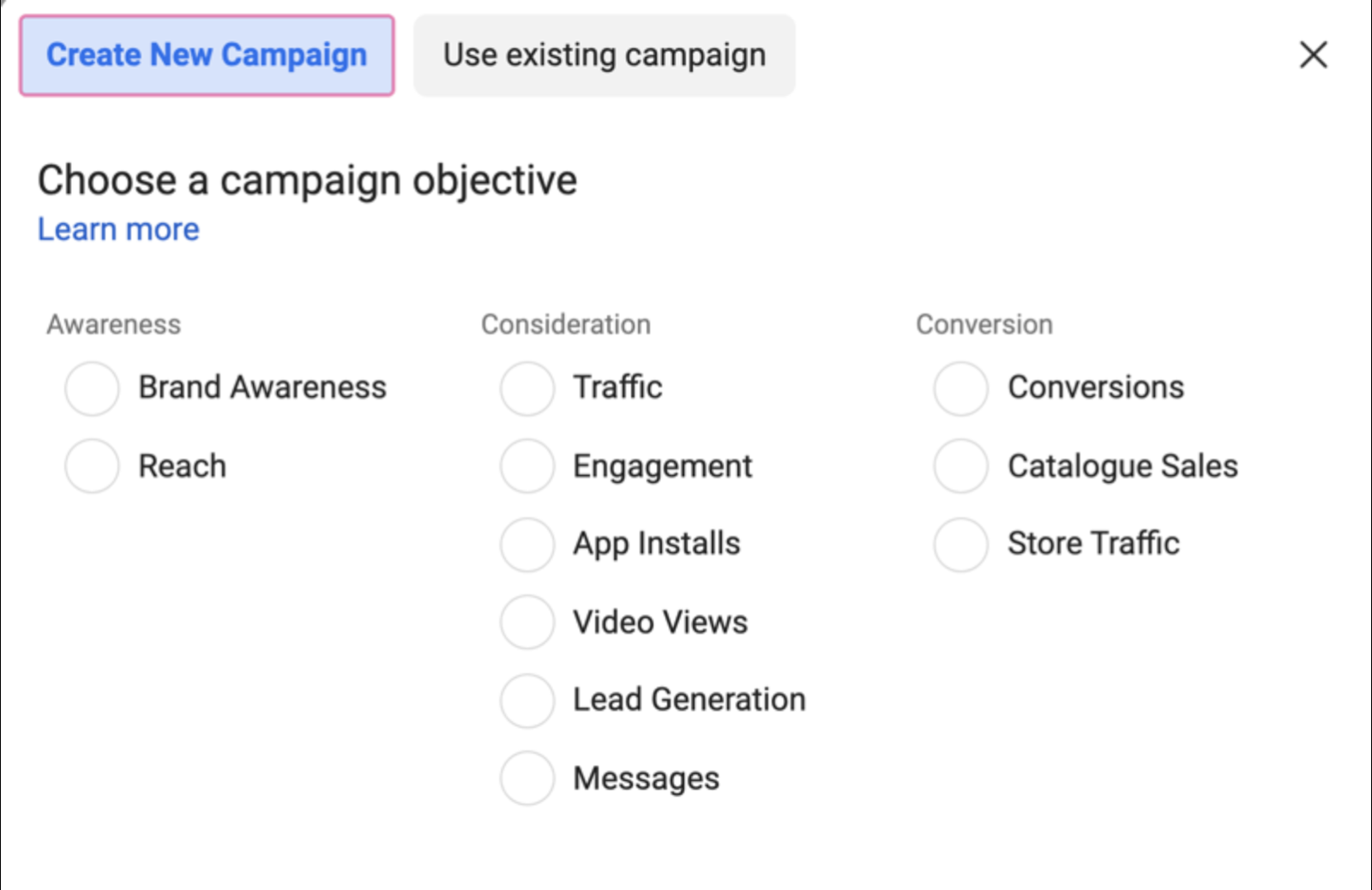
13. Making Changes Too Quickly
One of the most common Facebook ad mistakes we see people committing is changing creatives too quickly.
When monitoring your campaigns, don’t make changes too quickly, as the results may not accurately reflect your success. To see the true impact of your campaigns, you need time for them to reach prospects.
How To Fix This:
The solution for this frequent Facebook advertising mistake is really simple. To make more informed campaign decisions, allow your campaigns to reach prospects and deliver data back to you.
Depending on the scope and duration of your campaign, you should wait a certain amount of time before making changes. If you run a long-term campaign that lasts a month or two, you might wait a week or two before making adjustments. Shorter campaigns, such as those lasting only a week, may require you to wait a day or two before adjusting.
If you allow your campaigns to run for enough time, you will be able to gather valuable data that will help you make informed marketing decisions.
Common Facebook Ad Mistakes: FAQs
What are the 5 W’s of advertising?
The common way of citing the Five W’s—who, what, when, where, and why—rolls off the tongue and is a great mnemonic device. But if you want to optimize your marketing efforts, think about why, who, what, where, and when.
What is the biggest challenge with Facebook ads?
Here are the top 4 problems you might encounter with Facebook advertising:
- No target customer personas and Facebook marketing goals.
- Not knowing what kind of content works for your brand.
- Struggle to create enough demand for your content.
- Difficulty in measuring ROI in Facebook ads.
Want some extra tips on how to optimize Facebook ads when they’re not working? Check out this article next.
Is $5 enough for Facebook ads?
Many people believe that you need a ton of money to advertise on social media. The truth is that anyone can build a successful Facebook ad campaign for just $5 per day.
Wrapping Up: Common Facebook Ad Mistakes
If you’re making some of these common Facebook advertising mistakes, don’t fret! Planning a comprehensive Facebook ad strategy may seem overwhelming. Without a clear plan, you’ll end up with vague metrics and vague goals.
To succeed with your Facebook Ad campaign, you must go the extra mile to establish a connection with your audience. You should research your target audience and consider what ads work best.
Using Facebook ads properly can lead to incredible results and rapid growth for a business.
If you’re serious about generating qualified leads to scale your business, we can help. We work with businesses to develop streamlined and profitable client acquisition strategies. Book a free consultation call with one of our advisors today to learn how we can support your business.


